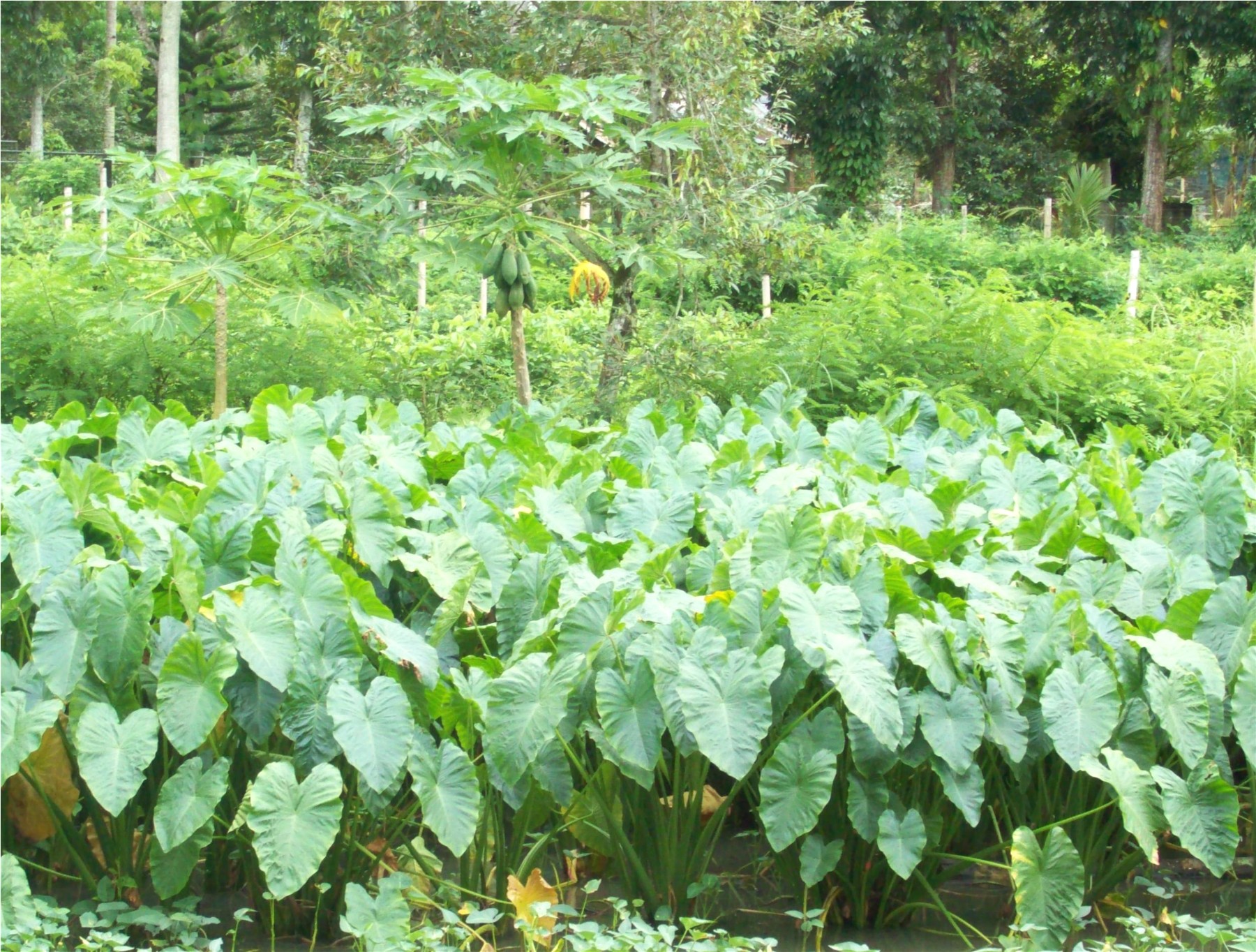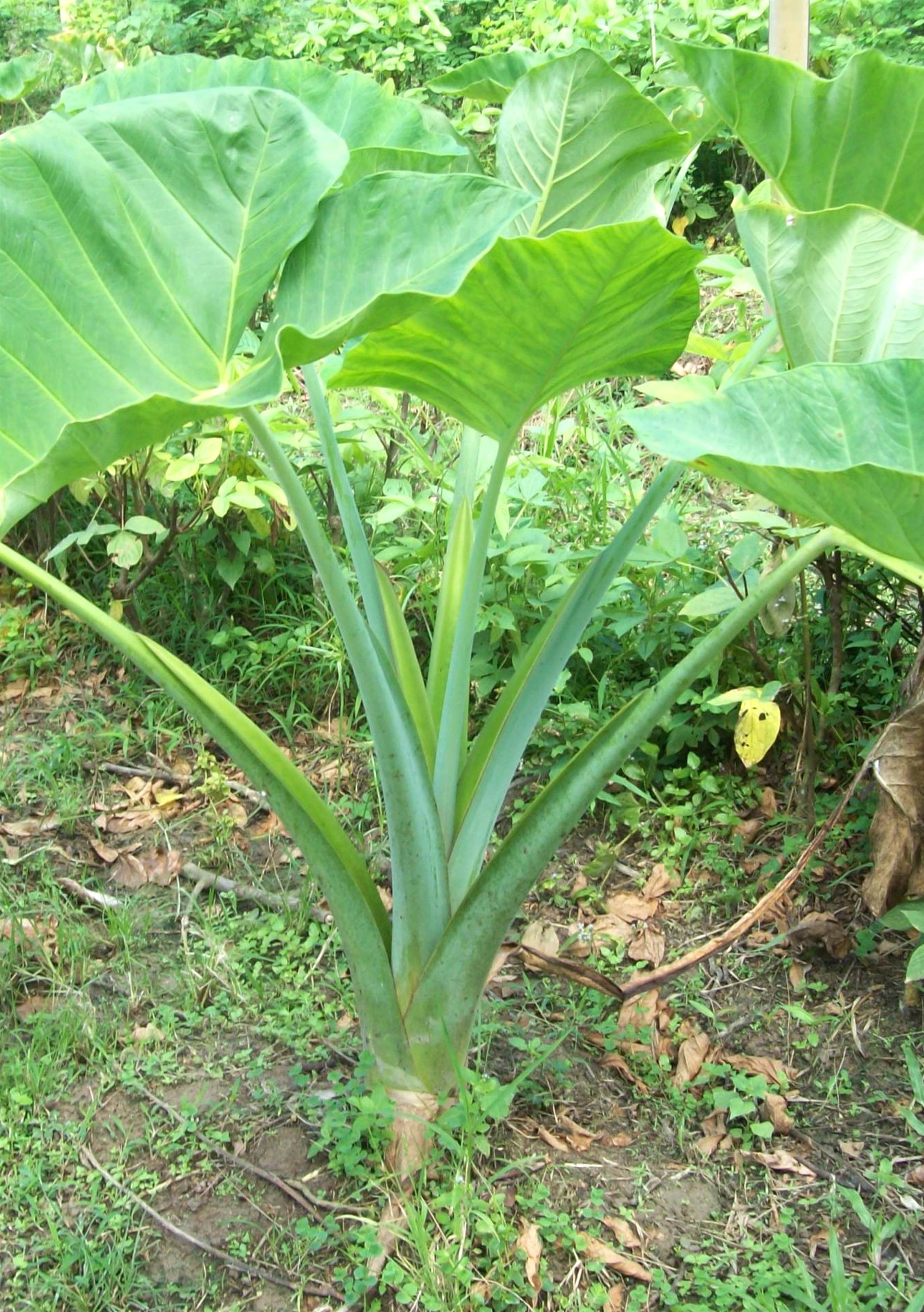Text and Photos by Henrylito D. Tacio
Sweet potato (camote) and cassava (balinghoy) are the two most popular root crops in the country. They are also considered “disaster-after crops” as they can be harvested even after calamities like typhoons and earthquakes as they are grown beneath the soil.
Both root crops are also versatile as they can be used in various food preparations. Now, you may add taro to the list. Known scientifically as Colocasia esculenta and the word esculent is an English word taken directly from the Latin, which means “edible.”
Most Filipinos don’t know that fact. Another fact: gabi – as it is called by most Filipinos – was once the most edible root crop in the world because it is loaded with essential nutrients and vitamins.
Taro – or gabi as it is called by Filipinos – was once one of the most edible root crops in the world because it is loaded with essential nutrients and vitamins. Unfortunately, when French fries (made from potatoes) and ube (a popular ingredient of ice cream) took the center stage in the food business industry, taro faded into oblivion.
But taro may soon become popular again. Thanks to a study conducted by the Agusan del Sur State College of Agriculture and Technology (ASSCAT). The focus of the study was the giant swamp taro (GST). Known in the science world as Cyrtosperma chamissonis, this is the kind of taro that is abundant in the province.
Initial findings of two ongoing GST projects show the crop’s potential as a source of supplemental food.
“With its abundance not only in Agusan del Sur but throughout the Philippines, the GST can be an alternative or supplemental food source, which can contribute in achieving food security in the country,” wrote Sarah Hazel Maranan-Balbieran of the Philippine Council for Agriculture, Aquatic and Natural Resources Research and Development (PCAARRD).
The researchers said GST can be processed as flour or starch used for making chips for snacks, baby food, and other food products.
But to make the venture profitable and sustainable, locations of communities with existing GST, processing plants, and produced GST end-products should be discovered and be known to investors and researchers.
“Fresh GST corms, also called the ‘crisis food,’ should be processed into dried GST chips for further processing into bakery products because they are highly perishable a few days after harvest,” Maranan-Balbieran wrote.
PCAARRD, a line agency of the Department of Science and Technology (DOST), seemed to agree. That’s why it supported the projects, “Development and Use of a GIS-based System for Giant Swamp Taro Production, Processing and Utilization in Agusan Del Sur” and “Development of Giant Swamp Taro Chipping Machine.”
Both are implemented by ASSCAT in Agusan del Sur.
The first project aims to determine the magnitude of GST communities in Agusan del Sur in terms of vegetation volume compared with its corresponding utilization. The output will also aid in strategizing the GST production within the province.
The objective of the second project, on the other hand, is to extend GST’s shelf life and maximize its utilization through the design and development of a GST chipper.
Assistant Professor II Engr. Manuel T. Tabada, Jr., who is the project leader, said the team had already surveyed a total of 12 out of 14 municipalities in Agusan del Sur. He added that they have already conducted three webinars regarding supply and demand, research-writeshop, and basic geographic information system (GIS) mapping and GST characterization.
Taro is grown particularly for its corm. It is prepared in various ways.
In the Philippines, it is used primarily for ginataan, which uses coconut milk and gabi that are mixed with tropical fruits. Laing is another Filipino dish whose main ingredients are taro stem and petioles that are cooked in coconut milk, salted with fermented shrimp, and spiced with red hot chilis.
Dindo A. Danao, in an article, wrote that taro’s boiled corm and cooked petioles have numerous health benefits. “This is because taro is a good source of dietary fiber, vitamins B, C, and E, iron, calcium, phosphorus, potassium, magnesium, thiamine, riboflavin, and folate,” he wrote. “It has low content of saturated fat, cholesterol and sodium.”
Taro is also popular in other Asian countries. Wikipedia reports that in India, it is used as a staple food, as a side dish, or as a component in various side dishes. As a staple food, taro is steamed, and eaten with a chutney of green pepper and shallot onions.


In China, taro is mainly used as a flavor enhancing ingredient. It is commonly braised with pork or beef. It is used in the dim sum cuisine of the southern part of the country to make a small plated dish called taro dumpling, as well as a pan-fried dish called taro cake. The latter is a delicacy traditionally eaten during the Chinese New Year. In desserts, it is used in tong sui, bubble tea, as a flavoring in ice cream, and other desserts.
In Taiwan, taro chips are often used as a potato-chip-like snack. Compared to potato chips, gabi chips are harder and have a more assertive nutty flavor. They are generally made from upland taro because of their lower moisture.
In Japan, taro was a regional staple food before rice became predominant. The corm is often prepared through simmering, but occasionally grated and eaten raw or steamed. In Bangladesh, taro is cooked with small prawn into thick curry.
Flour can also be produced from taro corms. The flour can be used for soups, biscuits, bread, beverages, and puddings. Taro starch is highly digestible and is recommended as baby food.
According to Wikipedia, chemical studies in Hawaii to determine the food properties of poi (a native food prepared from boiled taro corms mixed with water, cooked, mashed into paste, and slightly fermented) have confirmed its value as food for normal, allergic, and potentially allergic babies.
Taro is not only good for food, but it has some medicinal properties.
“Aside from being a main source of nutrients, taro is used as herbal medicine,” wrote Danao. “The juice of its petioles is used for earache, otorrhea, internal hemorrhages, otalgia, and adenitis. Meanwhile, the juice of its corm is a good laxative and acts as an antidote for wasp and insect stings. Heated, the taro corm can ease painful rheumatic joints.”
Taro is native to the Old World but has become an important crop in the equatorial regions of the world. It is believed to have been cultivated as long as 6000 years ago, and some sources assert that it originated in Southeast Asia or India.
In the Philippines, taro can be grown anywhere as it grows on all kinds of soils. But for best results, it must be planted on deep, well-drained, friable loams, particularly alluvial loams with a high level of water table. Saline soils could be tolerated by taro.
“The crop can be grown in all parts of the Philippines, from sea level to 1,800 meters high,” notes The Philippines Recommends for Gabi, published by PCAARRD. “The crop has particular potential in marshy, waterlogged regions and for coastal and saline areas.”

